Medusa
Aequorea forskalea
Australian spotted jellyfish - Phyllorhiza punctata
Barrel Jellyfish - Rhizostoma pulmo
Cigar jellyfish - Olindias phosphorica
Glowing jellyfish - Pelagia noctiluca
Mediterranean Cassiopeia or Fried Egg jellyfish - Cotylorhiza tuberculata
Sea Raft - Velella Velella
The jellyfish is a planktonic animal, marine prevalence, belonging to the phylum Cnidaria, which together with the Ctenophores formed what were once Coelenterates.
sa animale planctonico Cnidari Celenterati jellyfish
Generalmente rappresenta uno stadio del ciclo vitale che si conclude dopo la riproduzione sessuata con la formazione di un polipo. Alcuni studi hanno verificato che la medusa Turritopsis nutricula è potenzialmente immortale perché è dimostrato che, col passare del tempo, è in grado di ringiovanire sempre di più fino a ricominciare un nuovo ciclo di vita. Questo processo di ringiovanimento sembra essere causato da forti fattori ambientali che partecipano ai mutamenti cellulari dell’organismo.
Le meduse di dimensioni maggiori si ritrovano tra gli Cnidari Scyphozoa, le cosiddette scifomeduse, tra le quali primeggia la Cyanea capillata, diffusa nei climi temperati ed artici, che può arrivare ai 2,5 m di diametro. Lo stadio polipoide è molto spesso ridotto e nella Stygiomedusa gigantea e Pelagia noctiluca, specie oloplanctoniche, risulta invece assente.
Generally represents one stage of the life cycle that ends after the sexual reproduction with the formation of a polyp. Some studies have found that the jellyfish Turritopsis nutricula is potentially immortal because it is shown that, over time, you can always look younger and more until you start a new life cycle. This rejuvenation process appears to be caused by severe environmental factors involved in body’s cellular changes.
The size jellyfish more can be found among the Cnidaria Scyphozoa, the so-called scifomeduse, among which stands the Cyanea capillata Jellyfish, widespread in temperate and arctic climates, which can get to 2.5 m in diameter. The polypoid stage is often reduced and in stygiomedusa gigantea and Pelagia noctiluca, especially oloplanctoniche, is absent.
Cubozoans in the “umbrella-shaped structure” is cubical with tetraradiale symmetry. The box jellyfish, jellyfish common in tropical seas, are small in size, with up to 15 cm (3 meters in extent) of Chironex fleckeri; however they are very dangerous and sometimes even deadly to humans, that has so nicknamed “sea wasp”.
The stadium jellyfish is absent in the cnidarians Anthozoa class and in some species of Hydrozoa, such as the Hydra, including in many cases the prevailing colonial polypoid form, and idromedusa is size and shortened life.
Anatomy and physiology
The general form of a jellyfish is that of an inverted polyp. It can be thought of as a slightly flattened lot, where you recognize a convex upper zone, the esombrella, and a lower concave region, called subombrella, whose center is placed the mouth that plugs into the cavity through a gas- tubular structure called manubrium (handlebar). The margin subombrellare propagate the stinging tentacles for defense and predation.
The jellyfish have the body mainly composed of water (about 98%).
Stinging Capacity The tentacles host the cnidociti, the special cells that function once and they must be regenerated. They have defensive functions, but especially offensive to paralyze their prey. They are activated when you touch thanks to a meccanorecettore said cnidociglio and evert the stinging filaments called cnidae. The cnidae can be of different types, nematocysts or spirocisti, and are linked to specific organelles, called cnidoblasti, which contain a stinging liquid. Generally it cnidae injecting a substance that kills the prey for anaphylactic shock. The stinging liquid has neurotoxic action or emollient, the nature of which may vary depending on the species, but is usually constituted by a mixture of three proteins to synergistic effect. From his studies, the Nobel Prize Charles Richet spotted the three proteins and classified as: ipnotossina, talassina and congestina. The ipnotossina has anesthetic effect, thus paralyzing; the talassina has an allergenic behavior that causes an inflammatory response; the congestina paralyzes the circulatory and respiratory systems.
Rhopalium Some jellyfish classes, including the scifomeduse and the cubozoans, have ropali, a sensory organ with eyes and a statociste. The statociste is a vesicle containing a mineral body said statolite (or statolito), vesicle that gives jellyfish spatial sense of direction The ropalium are much more advanced in box jellyfish jellyfish which include up to six eyes, sensitive to light and a neuropupilla statociste. The structure of the eyes can also be complex, with similar to the crystalline lens. Of all the cnidarians, the cubozoans are the only ones able to swim actively to hunt and avoid obstacles precisely the elaborate visual system of their ropali. In ropali simpler anatomically, the eyes are replaced by an eyespot that allows the animal to adjust its depth according to the intensity of the light. Reproduction The reproduction of the jellyfish is of a sexual nature, that is by means of gametes that are usually issued in the external environment, where fertilization occurs. In Scifozoi we can distinguish two phases:
- the sexual stage: The female lays eggs in the sea; the green male sperm that fertilize; the zygote is born planula, a larva descends and seabed fixed where he later takes the form of an octopus and is called scifostoma (similar to one sea anemone);
- asexual stage: the scifostoma is divided later in efire, young jellyfish that will become adult.
Natural predators of jellyfish are especially cetaceans, puffers and turtles, which now scarce in the Mediterranean. Some fish, like the “horse mackerel” in our seas, are immune to poison and use the jellyfish as a hiding place from the possible dangers, even used digestive cavity to lay eggs from which will be born small.
Aequorea forskalea |
|
 |
Aequorea forskalea (Péron & Lesueur, 1810) is a jellyfish of Aequoreidae family. Description The umbrella of this species from 8 to 25 cm size in diameter and is characterized by the presence of several radial channels of dark brown or bluish from |
Cassiopea Mediterranea – Cotylorhiza tuberculata |
|
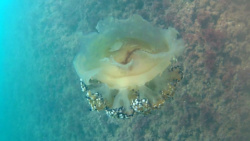 |
The Mediterranean Cassiopeia or Fried Egg jellyfish (Cotylorhiza tuberculata Macri, 1778) is one of scifomedusa cepheidae family, common in the Mediterranean Sea. |
Medusa Luminosa – Pelagia noctiluca |
|
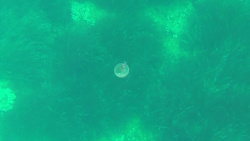 |
Pelagia noctiluca, commonly known as glowing jellyfish, jellyfish is one of pelagiidae family. Distribution and habitat It is common in the Mediterranean and eastern Atlantic to the North Sea; It was mentioned … |
Polmone di Mare – Rhizostoma pulmo |
|
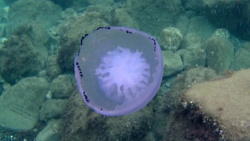 |
The Barrel Jellyfish (Rhizostoma pulmo Macri, 1778) is one of the scifomedusa Rhizostomatidae family.Distribution and habitat Detail of the handlebar and the tentacles of a Barrel Jellyfish. |
Comment (1)
Post A Comment For The Creator: Andrea Cirivasi
You must be logged in to post a comment.

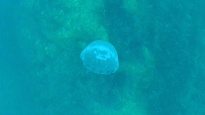
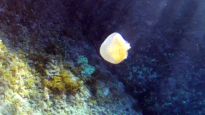
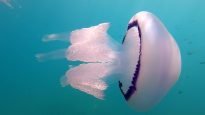
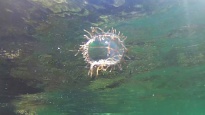
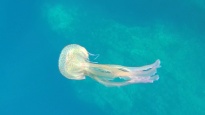
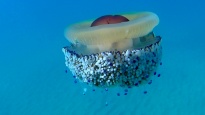

I see your website needs some fresh posts. Writing manually
takes a lot of time, but there is tool for this boring task, search for: unlimited content Wrastain’s tools